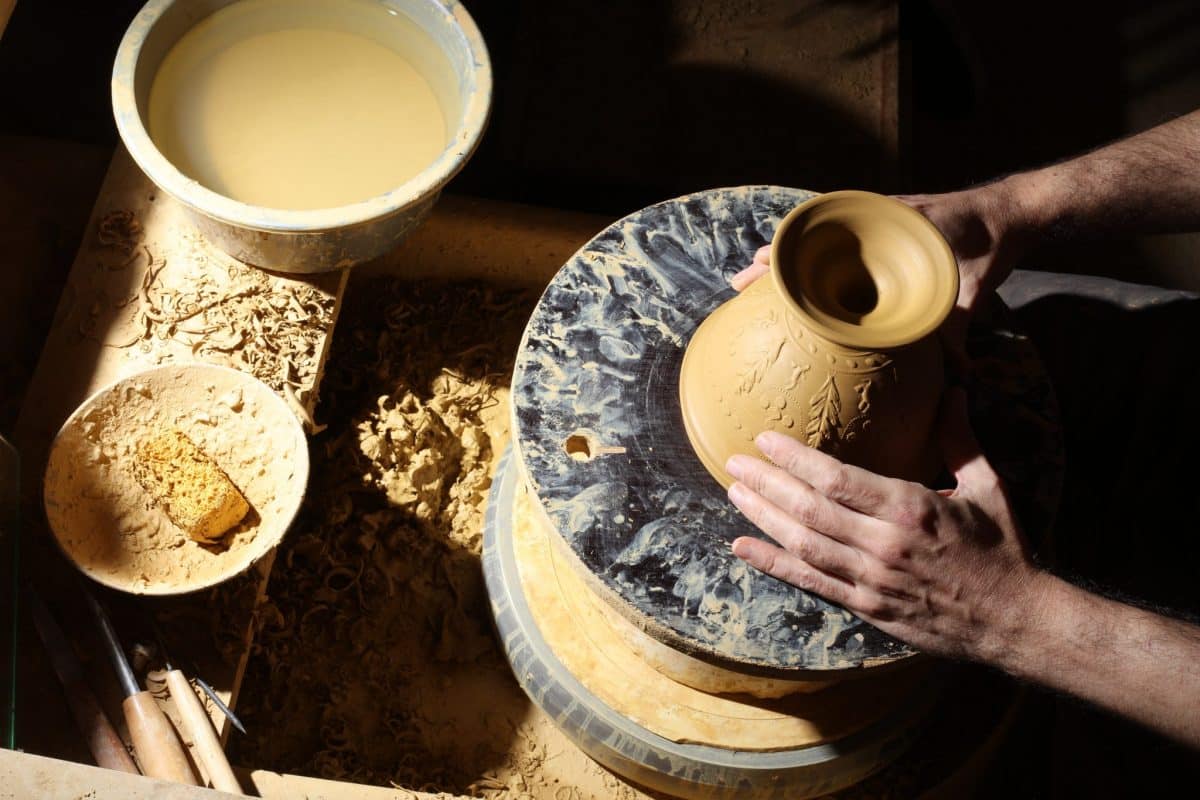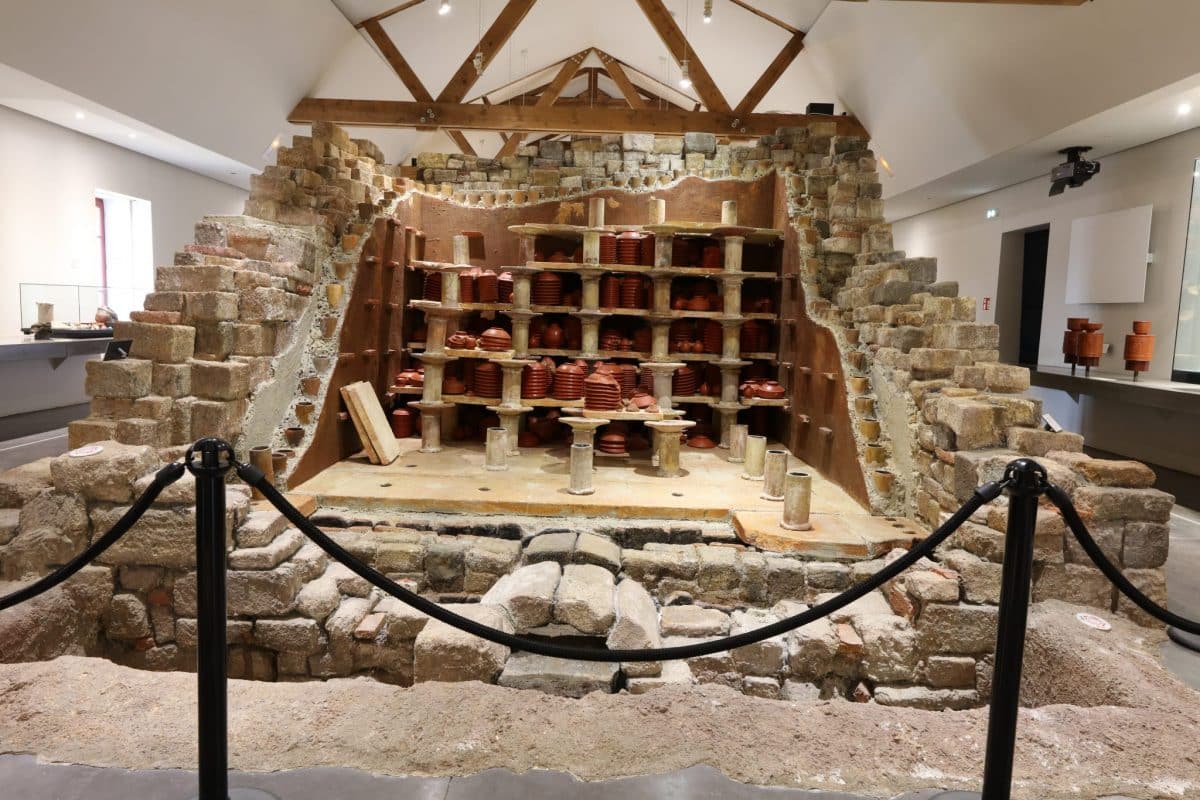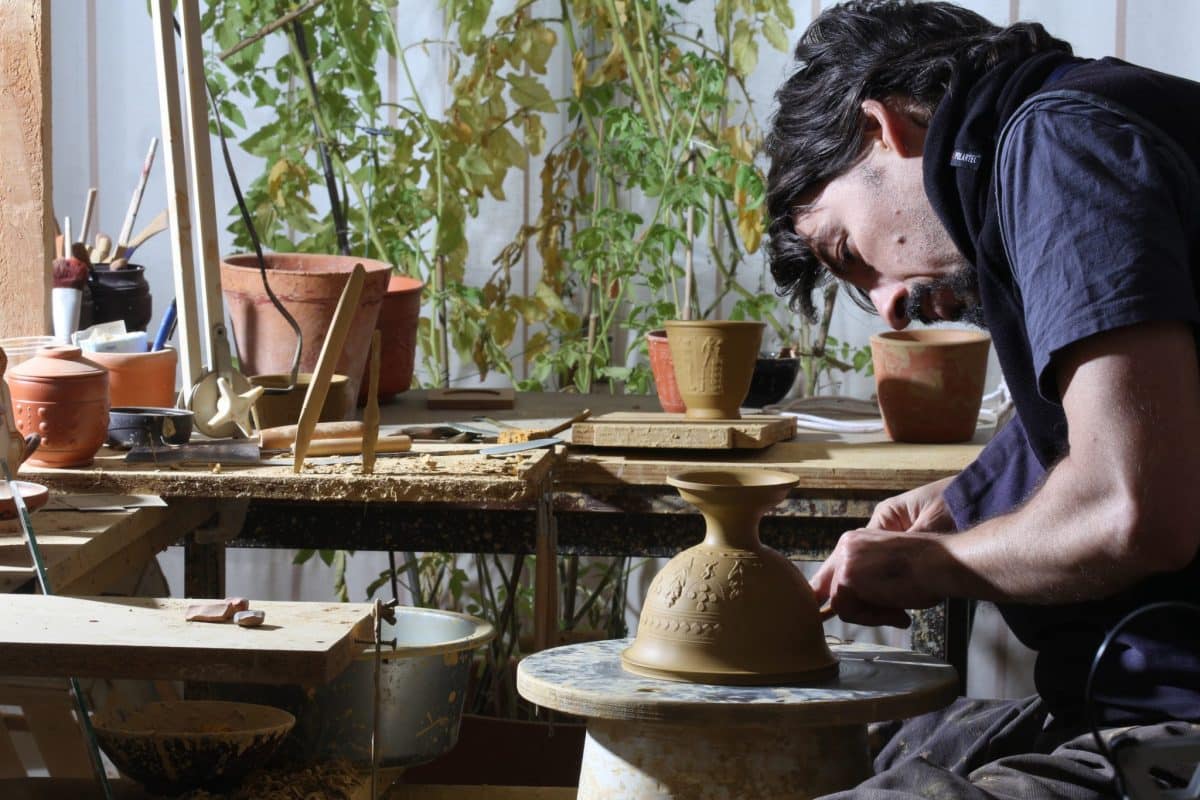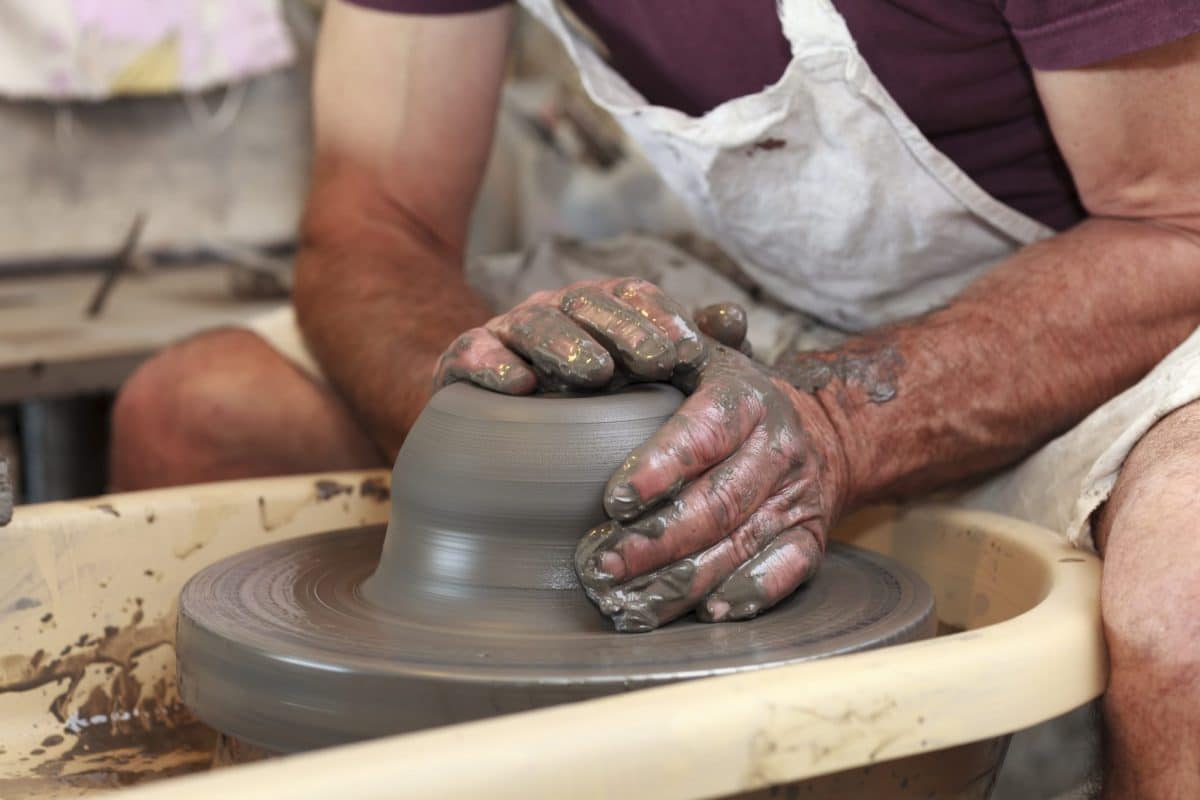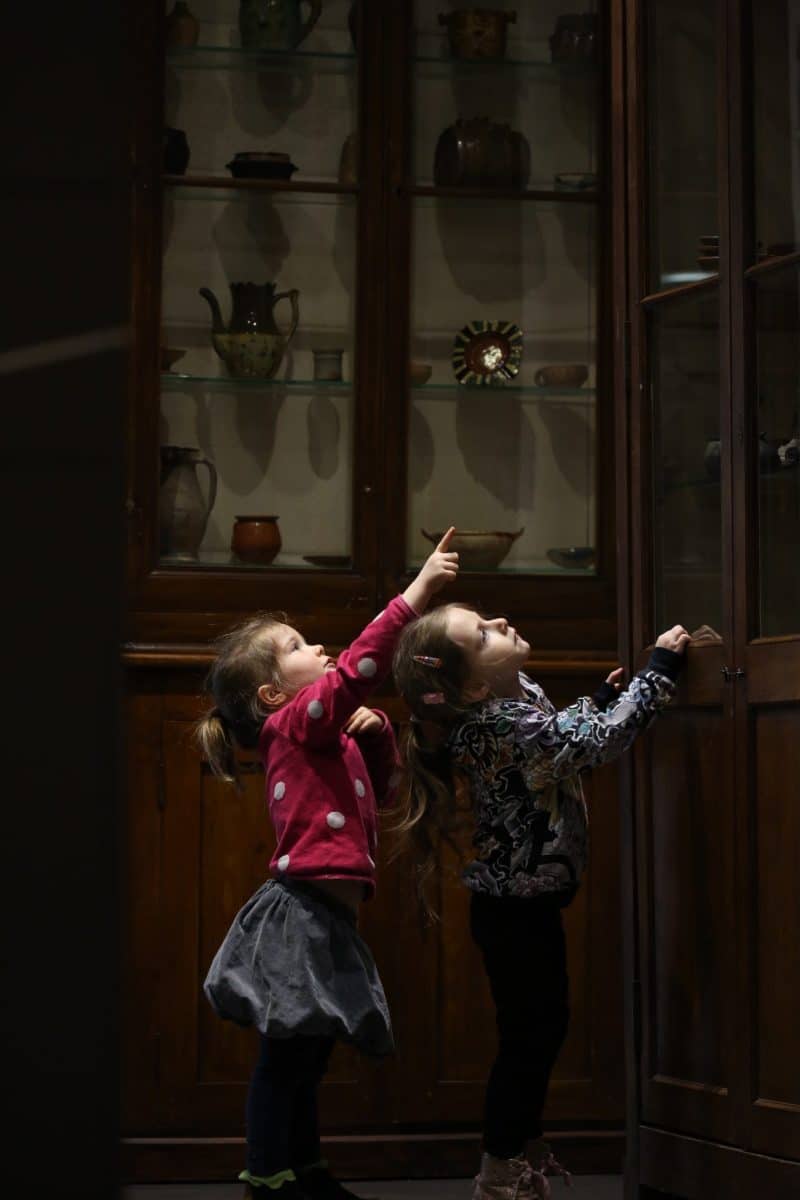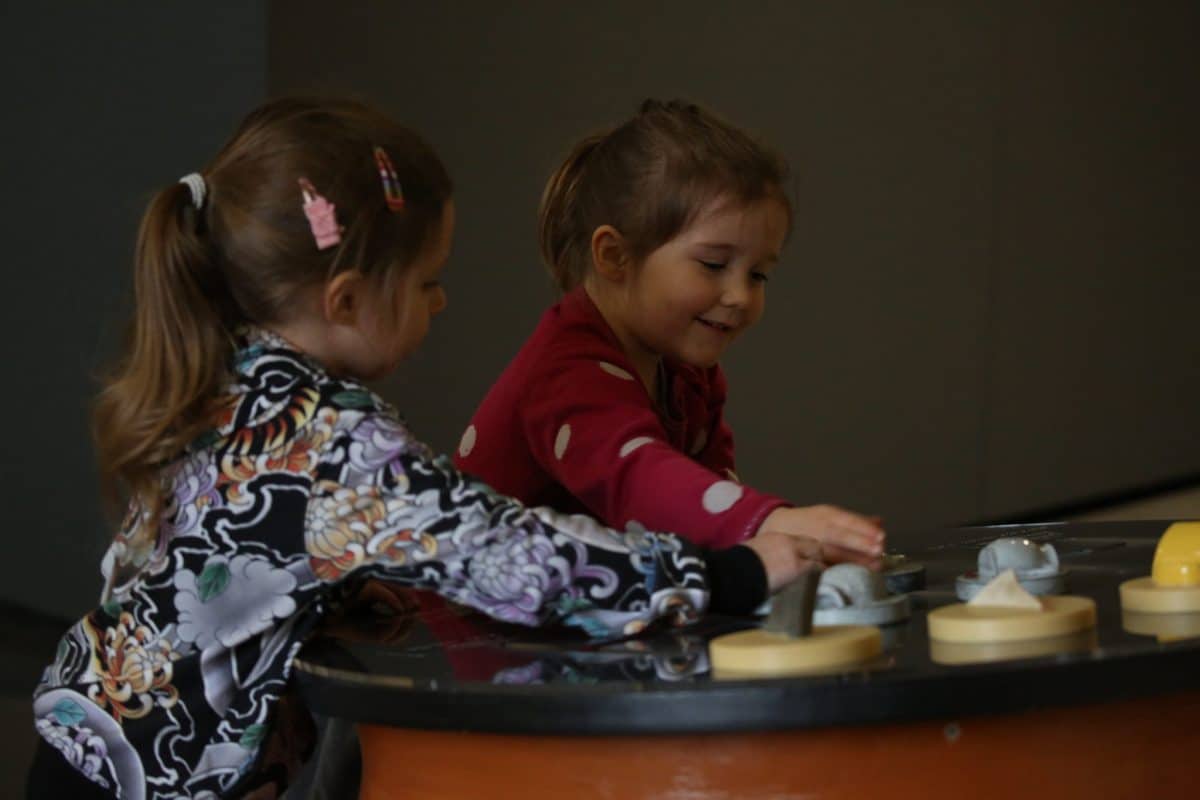At the origins of ceramics
The birth of ceramics, an art whose invention is lost in the mists of time. Long before Lezoux became a reference in the art of pottery, our distant ancestors discovered the magic of transforming clay into durable objects.
Remains dating from the 6th millennium BC in the West and the 7th century BC in the Near and Middle East attest to its long history.
Over the centuries, men have not only learned to shape clay with dexterity but also discovered the art of cooking, giving their creations a solidity and durability that defies the centuries. This innovation spread like a spark across continents, each culture bringing its distinctive touch.
Thus, from Egypt to Lezoux, ceramics has become a universal language of craftsmanship, a testimony to the ingenuity and artistic spirit of humanity. Moreover, the Lezoux ceramics museum is a witness to this long history.
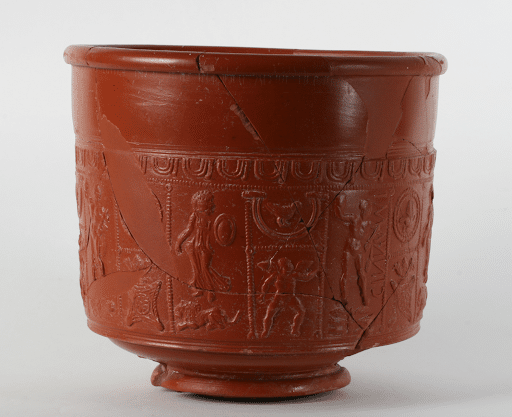
The history of ceramics in Lezoux
The town of Lezoux is located on a sandy strip rich in clay. His adventure with ceramics began in the Gallic era, around the 1st century BC, although only one potter's kiln from this period is attested to date.
The arrival of the Romans marked a decisive turning point and Lezoux became a center of intense activity for the manufacture of various ceramics, ranging from table and culinary crockery to terracotta objects for construction and religious ex-votos.
Among these creations, signed ceramic stands out, recognizable by its red or orange color and its relief decorations. These pieces, decorated with mythological or floral scenes, bore the name of their creators, testifying to the importance of the artistic signature at that time: more than 1200 potters' names have been listed.
The Lezoux sigillae, a prized and quite luxurious tableware, was exported throughout the Roman Empire, from Great Britain to Poland, thanks to a well-established distribution network. By visiting the Lezoux ceramics museum, you can discover unique pieces from this period.
However, with the end of Antiquity and the social upheavals that accompanied it, ceramic production declined, without ever completely dying out. Traces of ceramic production remain from the 7th to the 9th century, then in the Middle Ages, although less known and more local.
In the 2007th century, Lezoux and its surroundings abounded with small factories and itinerant artisans, thus perpetuating the pottery tradition. Recognizing the historical importance of Lezoux in the art of ceramics, the Departmental Council of Puy-de-Dôme inaugurated a departmental ceramics museum in XNUMX, located in the former Bompard factory, an emblematic place of this tradition. This museum tells the pottery history of the region, testifying to centuries of know-how and innovation.
Open the door of the ceramics museum in Lezoux
Go back in time, share ancient secrets and admire the finesse of the creations of the time in a splendid and authentic setting!
In a former earthenware factory, the ceramics museum presents 1300 m2 of museographic and fun tours. The pottery can be touched. A tactile and fun journey has been imagined in the museum. Also, an immersive work to see, touch and smell: “The secret of the world”, a creation by Nathalie Talec.
You just have to watch the children running from one desk to another to judge the very family-friendly nature of the visit program. Especially since adults are happy to take part in the game, trying to identify shards or carefully tracing sigillata decorations. But what is signed ceramic? It is a fine ceramic intended for table service, characterized by a red sandstone glaze and relief, molded, printed or attached decorations. Some pieces bear stamps, hence the modern name sigillata, evoking a seal. If we find the best examples of desigilla here, it is because Lezouxen was the main center of production, between the 1st and 4th centuries AD, massively exporting its tableware throughout the Roman Empire.
Meet the artisan potters
The sigillata technique is still present in Lezoux. It is used in particular by Arnau Trullén, an archaeologist by training. He has been a potter in Lezoux for 3 years in his workshop Ars Fictilis, specialized in very faithful production of pottery with sigillata from the Roman period.
In his workshop pleasantly heated by a wood stove, he explains “being able to create something with nothing and there are not many jobs where you can do that”. He works on sigillata. In a few words, it is a Gallo-Roman tableware which has the characteristic of having an orange-red color, with reliefs which can represent characters, animals, vegetation. “I reproduce antique models. There is always my personal trace, even if we come very close to the original. There are pieces that I really like, like this production with very organized plant decoration, with flowers and garlands. »
Enjoy fun activities near the Lezoux ceramics museum
During a walk through the streets lézoviennes, you pass near the belfry, the Saint-Georges chapel or the many dovecotes. Also, if you want to fly in the air: the tree climbing course of Lezoux awaits you. Thus, two unforgettable zip lines will make you fly over a body of water. Finally, ten minutes by car, enjoy an outdoor playground: the “Limagne Évasion” paintball field. Finally, to recharge your batteries, read, listen, play or rest: the playful media library of Lezoux also knows how to surprise you with its bioclimatic architecture.
Take a breath of fresh air in the county forest
Livradois-Forez is one of the most wooded regions in France. And the county forest, near Saint-Julien-de-Coppel, is one of the most beautiful forests in this natural park in Auvergne. The County… Its name is reminiscent of the famous imaginary land of the British writer JRR Tolkien. Except that it really exists, in another middle earth, in the Massif Central.
The Comté forest extends over an area of 1500 hectares, at the foot of the Livradois mountains. The Comté massif offers unique panoramas from peaks such as the Pic du Cheix Blanc and the Pic de Dimond. This unique geographic and historical configuration favors a great diversity of natural habitats, from dense forests to rocky grasslands.
Also recognized as a sensitive natural area, it is home to astonishing natural riches. The Shire Forest is home to rare plants such as the knotted geranium and protected species such as the martagon lily. The fauna is just as diverse, with the presence of large mammals such as deer and wild boar, as well as smaller and rare species such as the spotted salamander.
Comfortably located on the oldest volcanic group in Europe, it is shaped by a few peaks and puys. A special atmosphere grips you when you enter under the trees. You are in the kingdom of oaks.
Would you like to know more about local biodiversity? The House of Natural Spaces, in Salledes. This place is dedicated to environmental education (reception and temporary exhibitions), opens its doors from April to October Monday, Wednesday, Saturday and Sunday from 13:30 p.m. to 17:30 p.m. Its access is free, the rest of the year Wednesday from 14 p.m. to 17 p.m. Outside these hours, access by reservation (only for groups).
Other escapades in the natural spaces around Billom and Lezoux
- climb it Turluron from Billom
- Drink good water from the boiling springs of Medagues to Joze
- Take a walk in the county forest, in middle earth, surrounded by oak trees
Authentic experiences to live around Lezoux
- Be stone hunters during a workshop at the Amethyst House at Vernet-Chaméane.
- Discover Banya in Egliseneuve-des-Liards: a very invigorating Russian bath.
- Descend the Allier aboard a canoe at Joze or to Dalet.
- Learn to fish with Mickael Miclet, guide in Mezel.
- Taste bubbles in the Abbey Cellars in Chauriat.
- Walk through the Croze Gardens and its rose gardens in Billom.
- Discover the tradition of working the land at the potter's workshop of Bort l'Etang.
- Castles Mauzun et Montmor's, remarkable jewels of medieval architecture.


